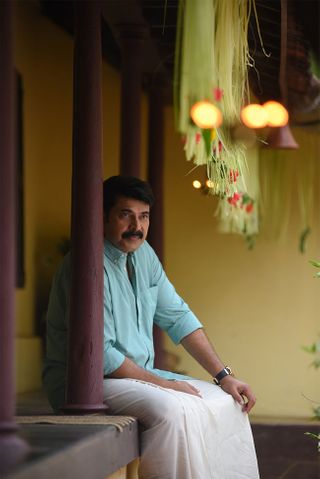The Passion of the Christ Movie Review
How does one rate a piece of art that can as inadequately be defined as cinema as the paintings on the roof of the Sistine Chapel in the Vatican described as ceiling decoration?
How does one go about slotting and defining a film as passionate and intense as "The Passion Of The Christ"? Is it a Biblical fable like Cecil de Melle's epic "The Ten Commandments" or funky like Norman Jewison's "Jesus Christ Superstar", or raw-and-riveting like Martin Scorcese's "The Last Temptation Of Christ".
Panning the last 12 hours in the life of Jesus Christ as he's whipped, flogged, lacerated and dragged with the cross before being nailed, writer-director Mel Gibson takes us into the soul of the most sublime sufferings of civilisation inflicted on its sporadic saints and saviours.
The inbuilt temptation of depicting gruesome and graphic violence is to make the camera stand witness in gloriously voyeuristic wonderment.
As Gibson, a skilled director, takes a long, lingering and damning view of the tragedy, we become one in the rites of savage salvation.
The narration is so starkly brutal and blunt that we feel every whiplash falling on the gaunt saint's bare, uncomplaining yet writhing back.
In terms of extended pain, "The Passion Of The Christ" goes beyond any cinematic work from anywhere in the world. Christ's torture in the holy city of Jerusalem has no parallel in the history of mankind, and that is how Gibson chooses to depict the mob fury and the brutal attack on a man who claimed to carry God's message on earth.
Often, you feel Gibson is on the verge of romanticizing Christ's torture and pain. He always turns back just in time.
Neither judgemental not holier-than-thou, the director follows Christ from the silvery jungles where he's betrayed by Judas and captured by his powerful adversaries, to the end when nailed to the cross bleeding battered and bruised beyond all powers of human endurance.
He loses his faith in God - but just for a second. "The Passion Of The Christ" is a mesmerizing, hypnotic, therapeutic and cathartic treatise on suffering and redemption.
One connects instinctively and indelibly with the film not just as a great work of cinematic art, but also as a document on human savagery.
The mob fury vented against an extraordinary man who threatens the status quo which would seem like an ancient fable in the West. For us this mentality is not a myth.
No film in recent or distant memory has gone so profoundly and excruciatingly into the anatomy of suffering.
Shekhar Kapur's "Bandit Queen" made the audience a horrified participant in the protagonist's brutalisation.
The viewer walks that acutely painful mile with the wounded saint, and yet we, the mute spectators, are guilty of bringing that pain on the soul. Gibson's poetry on the enigma of the soul is raw and mystical, revolting yet ravishing.
The gaping wounds on Christ's body are so real we want to run up with a healing touch, just like the woman in the frenzied crowd who braves the savage soldier's wrath to offer water to the dying Christ on the last lap of his journey.
Every one will walk home after the crucifixion with his own favourite moment of pain. One is just after the intense and incessant flogging when Mary, played by Maina Morgenstern, wipes the beloved blood with the spotless cloth.
In moments such as this, Gibson bathes us in metaphorical reverberations. And yet here lies the true triumph of the director's artistic spirit - the narration never loses sight of the optical brutality of the 'event'.
What can one say about the film's technical and geo-political acumen without taking away from Mel's miraculous and magical vision?
Caleb Deschanel's cinematography transports us back to the biblical era without an iota of self-consciousness. The characters all seem to have existed long before Deschanel reached with his luminous lenses.
The actors playing their parts with a fluency does the rest. Maia Morgenstern<









